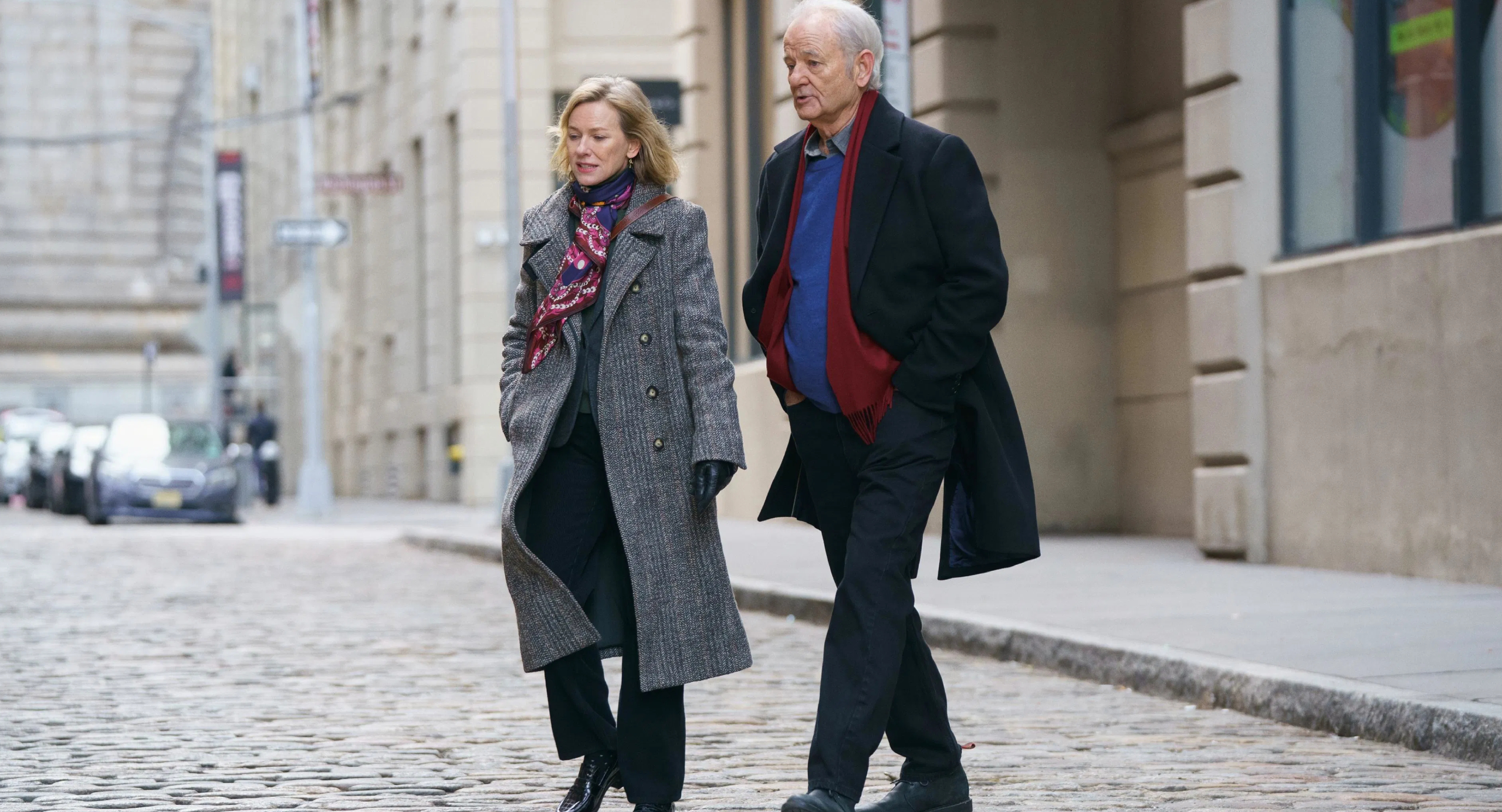The Friend – Film Review
Published April 7, 2025

In The Friend, a quietly observant drama directed and written by Scott McGehee and David Siegel, the simple act of caring for a dog becomes the catalyst for a deep and reflective emotional journey. Based on the 2018 novel by Sigrid Nunez, the film brings to life the story of Iris (Naomi Watts), a New York writer and literature professor who finds her life abruptly upended by the unexpected suicide of her closest confidant, Walter (Bill Murray), and the bequest of his enormous Great Dane, Apollo. What follows is a meditative, if occasionally uneven, exploration of grief, identity, and the strange ways in which love and memory inhabit our lives.
McGehee and Siegel, known for their cerebral and emotionally nuanced storytelling (The Deep End, What Maisie Knew), craft The Friend with a measured pace and literary tone, reflective of the novel it adapts. The result is a film that is at once intimate and introspective, but also prone to feeling meandering, especially when its thematic weight begins to outweigh narrative momentum. Still, there’s an undeniable grace in the film’s exploration of companionship—both human and animal—and the quiet spaces grief tends to fill.
At the center of the film is Naomi Watts’s performance as Iris, a woman whose intellectualism and solitude have long served as a fortress from emotional vulnerability. Watts plays Iris with a quiet reserve and brittleness, slowly allowing cracks to show as her relationship with Apollo deepens. Her initial discomfort with the 150-pound dog, who causes all kinds of mayhem, and eventually becomes the reason she’s threatened with eviction, is both comic and poignant. In many ways, Apollo becomes a physical manifestation of grief: heavy, unmanageable, disruptive—but also loyal, present, and silently healing.
Watts’s chemistry with the dog actor playing Apollo is subtle yet affecting, forming the emotional backbone of the film. McGehee and Siegel wisely avoid anthropomorphizing Apollo too much. He doesn’t perform tricks or act as a magical savior, but rather exists in Iris’s life as a presence—sometimes frustrating, sometimes calming, often inscrutable, just like grief itself.
Bill Murray is effective in his screen time, imbuing the character with a blend of charm, cynicism, and vulnerability that makes his absence felt keenly by both Iris and the audience.
The cinematography by Giles Nuttgens brings a moody and muted palette to the New York setting—rain-slicked streets, book-lined apartments, and dimly lit classrooms evoke an atmosphere of melancholic introspection. The visual tone mirrors Iris’s emotional arc: subdued but thoughtful, occasionally breaking into warmth when the bond between Iris and Apollo strengthens. Marcelo Zarvos’s score complements this well, soft piano and strings underscoring the emotional beats without becoming intrusive.
What ultimately keeps The Friend from ascending to the heights of its ambitions is its occasional self-seriousness and episodic structure. While it admirably avoids melodrama, the film sometimes becomes so inward-facing that it risks emotional inertia. Scenes of Iris reading, thinking, walking Apollo, or composing voiceovers are lovely but repetitious, and the film struggles with pacing as a result. There’s also a sense that Walter—who seems like such a central figure in Iris’s life—is never fully realized beyond his influence on her. While Murray does strong work, the character remains largely a cipher, his motivations and internal world left deliberately ambiguous in a way that can feel more frustrating than intriguing.
Still, the film’s strength lies in its thematic clarity. It is about mourning, not just for a person, but for a way of life, a sense of stability, and the myths we build around our relationships. Iris’s journey is less about resolution and more about accommodation—learning to live with memory, with uncertainty, and with the strange companionship of a creature who doesn’t ask for explanations or offer any.
The motif of writing and the writer’s life weaves throughout the narrative, and those familiar with academic and literary circles will find much to recognize: the insecurities, the egos, the desperate need for validation. The film touches on the difficulty of creation during periods of emotional upheaval, and the complicated dance between using pain as fuel and becoming consumed by it. For Iris, Apollo becomes both burden and muse—a contradiction the film embraces rather than resolves.
In the final act, The Friend offers no grand catharsis, no dramatic transformation, but rather a quiet shift in Iris’s posture toward the world. Her embrace of Apollo, and by extension the messy, unpredictable currents of grief and love, feels earned. The film ends on a note of gentle ambiguity, one that honors the novel’s spirit and leaves the audience with a soft ache rather than a clean resolution.
The Friend is a thoughtful, delicately made drama that succeeds more in mood than momentum. Anchored by Naomi Watts’s introspective performance and a touching depiction of the human-animal bond, it’s a film that rewards patience but may alienate viewers looking for a more traditionally structured narrative. While it doesn’t always strike the perfect emotional chord, its meditations on love, grief, and artistic purpose resonate long after the final frame.
